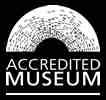Dinosaur DISCOVERIES
Contributed by Rebecca Skimming
The old stone quarries to the north of the village, particularly Whitemans Green, are famous as the sites of some of the most significant early dinosaur fossil discoveries in world. The yellow/brown sandstone, known as Cuckfield stone, was deposited in a river system and contains many fossils including turtles, crocodiles and dinosaurs.
In the early 1800s William Smith, the ‘Father of Geology’ famous for producing the first geological map of Britain, was surveying the quarries and found some peculiar vertebrae. He could not identify them and they remained ‘undiscovered’ in the collections of the Natural History Museum until the 1970s.
Ten years later, doctor and geologist Gideon Mantell started collecting and describing fossils from around Sussex as part of his work to describe the geology of south east England.


One of his most important fossils was actually discovered by his wife, Mary Ann Mantell, in a pile of stone that was to be used to mend a road. This strangely shaped tooth was to become the basis of his palaeontological researches. Mantell traced the rock back to Cuckfield and he had soon acquired more of the teeth and large fossilised bones as well.
At around the same time, a large fossil skeleton was being recovered from Oxfordshire and studied by William Buckland. Both Buckland and Mantell corresponded over their finds and concluded that some of the large bones from Cuckfield were similar to the ones in Oxfordshire. There was a race to publish their work and in 1824 William Buckland announced Megalosaurus, a large carnivorous reptile. He complimented Mantell on his collections and attributed some of the Cuckfield fossils to this creature.
The following year, Gideon Mantell published his research on the strange teeth from Cuckfield and announced Iguanodon, a large herbivorous reptile. He followed this in 1832 with an announcement of another large reptile he named Hylaeosaurus, published in his 1833 book “The Geology of the South-East of England”.
In 1841, these three large extinct reptiles were grouped together and named collectively “Dinosauria” by Richard Owen. They are united by unique anatomical features including the number of openings in the skull and the positioning of the hind limbs under the body for an upright posture.
Throughout the 19th Century further dinosaur fossils were found in and around Cuckfield and attributed to Cetiosaurus, Pelorosaurus and Regnosaurus. In the 21st Century scientists have realised that the early fossils were not necessarily from the dinosaurs they were originally thought to be. Megalosaurus, Iguanodon and Cetiosaurus are known as ‘waste basket taxon’ because these names were applied to a large assortment of fossils from around the world and different geological ages. They are not true species. Work is currently being carried out to resolve some of the taxonomic issues.
Dinosaur fossils from Cuckfield can be found in museums throughout the world including the UK, New Zealand and the USA. Cuckfield Museum has Megalosaurus, Iguanodon and Hylaeosaurus fossils on display that have kindly been loaned from the Booth Museum of Natural History, Brighton.
If you are interested in this or any other Cuckfield topics, why not visit us in the museum.





